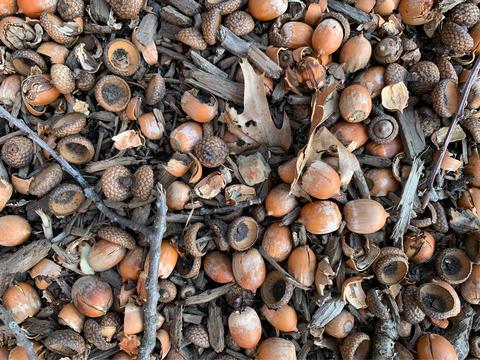Our official English website, www.x-mol.net, welcomes your feedback! (Note: you will need to create a separate account there.)
On mutualism, models, and masting: The effects of seed‐dispersing animals on the plants they disperse
Journal of Ecology ( IF 5.5 ) Pub Date : 2020-08-06 , DOI: 10.1111/1365-2745.13414 Christopher M. Moore 1 , Jacob W. Dittel 2
中文翻译:

关于共生,模型和桅杆:散布种子的动物对其散布的植物的影响
更新日期:2020-08-14
Journal of Ecology ( IF 5.5 ) Pub Date : 2020-08-06 , DOI: 10.1111/1365-2745.13414 Christopher M. Moore 1 , Jacob W. Dittel 2
Affiliation

|
- Species interactions are context dependent, in that their direction and magnitude can vary across ecological conditions. For seed dispersal interactions—especially interactions between plants and seed‐caching animals—the direction of the interactions is often obscured because of seed mortality inherent in seed handling and the delayed effects of fitness benefits received by plants. It is, therefore, an open question in ecology to understand the ecological contexts under which seed dispersal interactions are facilitative, antagonistic or null.
- We review the fitness benefits of animal‐mediated seed dispersal, extend a recently published model to include negative density‐dependent effects, and review the feedback between seed production (with a focus on masting) and seed‐caching animal populations.
- Negative density‐dependent effects are pervasive and strongly affect the direction of plant‐seed‐disperser interactions, and including them into models will give a more accurate understanding of the direction of the interaction. Including negative density‐dependent effects also makes the interpretation of interaction more mutualistic since seed dispersers decrease seed densities. Additionally, there is substantial interannual variability in seed production in most nut‐producing plant species, and the lags between seed production and seed‐disperser population sizes complicate and limit inferences made about the direction of interactions in any given short‐term study.
- Synthesis. If we wish to know the direction of species interactions in real ecological communities, we need models that contain a minimum level of biological realism. For complex and long‐term phenomena such as context‐dependent species interactions we should embrace a multifaceted approach of short‐term field research, long‐term field research, simple models, and complex models to form a more robust understanding of the ecological problem of context dependency.
中文翻译:

关于共生,模型和桅杆:散布种子的动物对其散布的植物的影响
- 物种之间的相互作用是取决于环境的,因为它们的方向和大小可以在整个生态条件下变化。对于种子传播相互作用,尤其是植物与种子吸收动物之间的相互作用,相互作用的方向通常被遮盖,这是因为种子处理中固有的种子死亡率以及植物获得的适应性益处的延迟效应。因此,了解种子散布相互作用是促进,拮抗或无效的生态环境是生态学中的一个悬而未决的问题。
- 我们审查了动物介导的种子传播的适应性益处,扩展了最近发表的模型以包括负密度依赖性效应,并回顾了种子产量(着重于肥大性)和种子饲养动物种群之间的反馈。
- 负密度依赖性效应无处不在,并且强烈影响植物-种子-分散剂相互作用的方向,将其纳入模型将使人们更准确地了解相互作用的方向。由于种子分散剂降低了种子密度,因此包括负密度依赖性效应也使相互作用的解释更加互惠。此外,大多数坚果生产植物物种的种子产量存在较大的年际变化,并且在任何给定的短期研究中,种子产量与种子分散器种群大小之间的滞后现象使情况复杂化并限制了相互作用的方向。
- 综合。如果我们想知道真实生态社区中物种相互作用的方向,我们需要包含最低限度生物现实主义的模型。对于复杂的和长期的现象,例如与环境相关的物种相互作用,我们应该采用短期田野研究,长期田野研究,简单模型和复杂模型的多方面方法,以形成对斑马鱼生态问题的更深刻理解。上下文依赖。



























 京公网安备 11010802027423号
京公网安备 11010802027423号